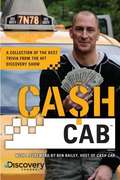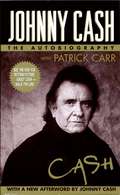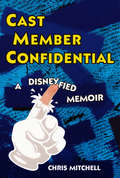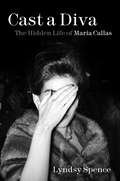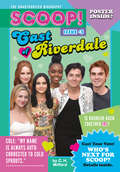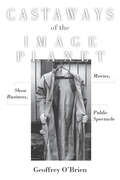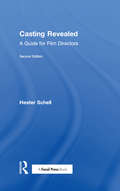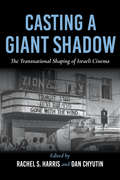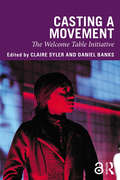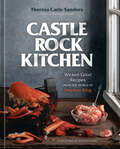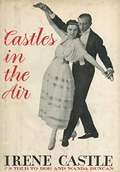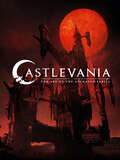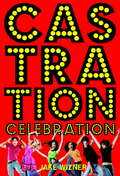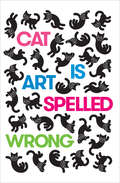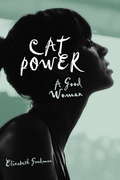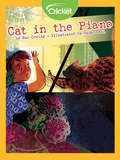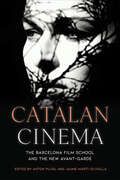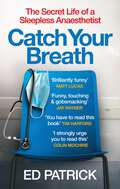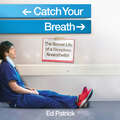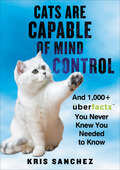- Table View
- List View
Cash Cab
by Discovery Communications Ben BaileyThe fast-paced, fact-driven, backseat game show fans can now play without hailing a taxi. It's the best, the most challenging, and the most popular questions from Cash Cab-and they're all no fare.Features: Organized for easy one-on-one read-along trivia, or game playing mode Hundreds of multiple-choice questions that vary in degrees of difficulty for novice trivia buffs to frontseat know-it-alls Popular "red-light challenges" and "shout-outs" Page after page of trivia sidebars and fascinating facts Cash Cab host Ben Bailey's favorite places to visit in New York
Cash: The Autobiography
by Patrick Carr Johnny Cash"The Man in Black", an icon of rugged individualism who's been to hell and back, tells it as never before.
Caspar Lee
by Caspar LeeA hilarious biography from YouTube sensation Caspar Lee (and his mom)! This is a book about me. Unfortunately, I didn't write it--my mom did. WTF!Let me tell you now that 98% of it is total lies. Actually, I'm pretty sure this book is illegal. So if you've bought it, you've basically supported a criminal. How does that feel?I think she's getting me back for my first day in this world when I may have tried to kill her. She won't not be able to mention that. You might also find out about my first day at school, why my head is so massive, how I've always been a hit with the ladies and other things like that.You know, important stuff. Anyway, I found the book at the printer and you'll see I've corrected some of her most outrageous lies.So, you know, enjoy. Just remember only the bits that make me look good are true . . .
Cast Member Confidential: A Disneyfied Memoir
by Chris MitchellThis is the story that Disney would never tell you. What do you do when everything in your life falls apart? If you're Chris Mitchell, you run away from home--all the way to Disney World, a place where no one ever dies--and employees, known as Cast Members, aren't allowed to frown. Mitchell shares the behind-the-scenes story of his year in the Mouse's army. From his own personal Disneyfication, to what really happens in the hidden tunnels beneath the Magic Kingdom and what not to eat at the Mousketeria, it was a year filled with more adventure--and surprises--than he could ever have "imagineered." Funny and moving, Mitchell tracks his ascent through the backstage social hierarchy in which princesses rule, and his escapades in the "Ghetto" where Cast Members live and anything goes. Along the way, he unmasks the misfits and drop-outs, lifers and nomads who leave their demons at the stage door as they preserve the magic that draws millions to this famed fantasyland--the same magic that Mitchell seeks and ultimately finds in the last place he ever expected. Chris Mitchell is an action sports photographer and journalist who grew up in Los Angeles. He was a senior at UCLA when he started his first magazine, an inline skating publication, and sold it to Sports & Fitness Publishing. Within a few years, he was working on five magazines within The Surfer Group. He continues to work closely with a number of publications and websites, as well as event and TV production companies like ESPN, ASA Entertainment and Lifelounge. He is a recognized expert in action sports, and as such, has stunt coordinated dozens of productions, including Batman and Robin, Brink! and Airborne. He is also the Chairman of the International Inline Stunt Federation for the advancement of extreme skating as a healthy and safe activity. After spending a year working as a photographer at Disney World in Orlando, Florida, he moved back to Los Angeles, where he currently lives.
Cast a Diva: The Hidden Life of Maria Callas
by Lyndsy SpenceCall it ‘charm’, call it ‘magic’, call it ‘Maria’ - Dorle Soria‘The new face of Maria Callas … is even more dramatic than how History (with a capital H) has already painted it.’ - Vogue ItaliaMaria Callas (1923–77) was the greatest opera diva of all time. Despite a career that remains unmatched by any prima donna, much of her life was overshadowed by her fiery relationship with Aristotle Onassis, who broke her heart when he left her for Jacqueline Kennedy, and her legendary tantrums on and off the stage.However, little is known about the woman behind the diva. She was a girl brought up between New York and Greece, who was forced to sing by her emotionally abusive mother and who left her family behind in Greece for an international career. Feted by royalty and Hollywood stars, she fought sexism to rise to the top, but there was one thing she wanted but could not have – a happy private life.In Cast a Diva, bestselling author Lyndsy Spence draws on previously unseen documents to reveal the raw, tragic story of a true icon.
Cast of Riverdale: Issue #3 (Scoop! The Unauthorized Biography #3)
by C. H. MitfordIntroducing a new series of unauthorized biographies on the world's biggest names and rising stars in entertainment, sports, and pop culture! Complete with quizzes, listicles, trivia, and a full-color pull-out poster of the star, this is the definitive collection to get the full Scoop! and more on your favorite celebrities.Riverdale has got it all: • Dangerous gangs. Check. • Murder mysteries. Plenty. • High-school drama. *Side eye roll* • Awkward love triangles. Where do we even begin? While we can all agree Hiram is LITERALLY the worst, one question remains: Will Jughead ever take off his beanie???Get the full Scoop! and more on your favorite cast's on-screen drama, their IRL relationships, and to find out who your spirit character is...Are you a Betty Cooper or a Veronica Lodge? An Archie or Jughead? Or maybe you're a Hiram after all?
Castaways of the Image Planet: Movies, Show Business, Public Spectacle
by Geoffrey O'BrienOne of our best cultural critics here collects sixteen years' worth of essays on film and popular culture. Topics range from the invention of cinema to contemporary F-X aesthetics, from Shakespeare on film to Seinfeld, and we include essays on 30's screwball comedies, Hong Kong Martial Arts movies, to the roots of spy movies and the televising of Clinton's grand jury testimony.O'Brien emphasizes the unpredictable interactions between film as a medium apt for expressing the most private dreams and film as the mass literature of the modern world. Several of the pieces are profiles of individual actors or directors-Orson Welles, Michael Powell, Ed Wood, Marlon Brando, Alfred Hitchcock, Dana Andrews, The Marx Brothers, Bing Crosby-whose careers are probed to look for the point where obsession meets public myth-making.
Casting Lily (Orca Limelights)
by Holly BennettOne bad decision jeopardizes Ava's chances of being able to perform on opening night. Fourteen-year-old Ava is thrilled when she lands a part in a play based on the true story of orphans sent to Canada in the 1800s to work on farms. But is she good enough to hold her own in a professional production? As the rehearsal pressures crank up, Ava struggles with her character, with the vocal demands of outdoor theater and with the annoying ego of her castmate Kiefer. But as she learns more about the historical Lily on which her part is based, things begin to fall into place. This short novel is a high-interest, low-reading level book for middle-grade readers who are building reading skills, want a quick read or say they don’t like to read! The epub edition of this title is fully accessible.
Casting Revealed: A Guide for Film Directors
by Hester SchellCasting is an essential component of any film or video project, but the core skill-set needed to cast effectively is little understood. Casting Revealed: A Guide for Film Directors is a straightforward manual on the art and craft of casting. Here, director Hester Schell offers her insider perspective on casting workflows, industry standards, finding actors, running auditions, what to look for in a performance, contracts, and making offers. This new edition has been updated with fresh interviews with casting directors, full color head shots, new information about online video submissions, and a companion website featuring forms, contracts, and sample scenes for auditions. Gain a fuller understanding of the misunderstood art and craft of casting actors for film and video production. Learn to find the right actors for any production, run auditions, interview actors, effectively judge performances and video submissions, evaluate suitability for a role, discover what it is you need from an actor, view headshots, draft contracts, make offers, and navigate current industry standards, unions, and procedures. This new edition has been updated to include full color sample head shots, new content on online video submissions, listings of casting wesbites, film resources, and film commissions and a companion website featuring interviews with celebrated casting directors from New York, Portland, Boston and Austin, necessary forms, sign-in sheets, contracts, and sample scenes for auditions.
Casting a Giant Shadow: The Transnational Shaping of Israeli Cinema (New Directions in National Cinemas)
by Mary N. Layoun Yaron Peleg Yaron Shemer Tobias Ebbrecht-Hartmann Zachary Ingle Raz Yosef Boaz Hagin Yael Munk Neta Alexander Ariel M. Sheetrit Ohad Landesman Shmulik Duvdevani Joshua Beaty Nava Dushi Pablo Utin Julie Grimmeisen Anat DanFilm came to the territory that eventually became Israel not long after the medium was born. Casting a Giant Shadow is a collection of articles that embraces the notion of transnationalism to consider the limits of what is "Israeli" within Israeli cinema. As the State of Israel developed, so did its film industries. Moving beyond the early films of the Yishuv, which focused on the creation of national identity, the industry and its transnational ties became more important as filmmakers and film stars migrated out and foreign films, filmmakers, and actors came to Israel to take advantage of high-quality production values and talent. This volume, edited by Rachel Harris and Dan Chyutin, uses the idea of transnationalism to challenge the concept of a singular definition of Israeli cinema. Casting a Giant Shadow offers a new understanding of how cinema has operated artistically and structurally in terms of funding, distribution, and reception. The result is a thorough investigation of the complex structure of the transnational and its impact on national specificity when considered on the global stage.
Casting a Movement: The Welcome Table Initiative
by Claire Syler Daniel BanksCasting a Movement brings together US-based actors, directors, educators, playwrights, and scholars to explore the cultural politics of casting. Drawing on the notion of a "welcome table"—a space where artists of all backgrounds can come together as equals to create theatre—the book’s contributors discuss casting practices as they relate to varying communities and contexts, including Middle Eastern American theatre, disability culture, multilingual performance, Native American theatre, color- and culturally-conscious casting, and casting as a means to dismantle stereotypes. Syler and Banks suggest that casting is a way to invite more people to the table so that the full breadth of US identities can be reflected onstage, and that casting is inherently a political act; because an actor’s embodied presence both communicates a dramatic narrative and evokes cultural assumptions associated with appearance, skin color, gender, sexuality, and ability, casting choices are never neutral. By bringing together a variety of artistic perspectives to discuss common goals and particular concerns related to casting, this volume features the insights and experiences of a broad range of practitioners and experts across the field. As a resource-driven text suitable for both practitioners and academics, Casting a Movement seeks to frame and mobilize a social movement focused on casting, access, and representation.
Castle Rock Kitchen: Wicked Good Recipes from the World of Stephen King [A Cookbook]
by Theresa Carle-SandersExplore 80 classic and modern recipes inspired by Stephen King&’s Maine, featuring dishes from the books set in Castle Rock, Derry, and other fictional towns—with a foreword from the legendary author himself.Castle Rock Kitchen is an immersive culinary experience from the mouthwatering to the macabre, with gorgeous, moody photographs to transport Stephen King fans to kitchen tables, diners, and picnic blankets across Maine. Recipes ranging from drinks to dessert (and every course in-between) are inspired by meals and gatherings from the more than forty novels and stories set in King&’s Castle Rock multiverse—a darker, more gothic version of the Maine most are familiar with. The eighty professionally developed dishes use plenty of local, down-home ingredients such as fresh seafood, potatoes, wild blueberries, and maple syrup, plus some delicacies from away—here are just a few:• Breakfast: Pancakes with the Toziers (It), Dog Days French Toast (Cujo)• Dinner: One-Handed Frittata (Under the Dome), Killer Mac and Cheese (&“Gramma&”)• Supper: Blue Plate Special (11/22/63), Whopper Spareribs (The Tommyknockers)• Fish and Seafood: Crab Canapés (Pet Sematary), Moose-Lickit Fish & Chips (The Colorado Kid)• Vegetarian: Wild Mushroom Hand Pies (Bag of Bones), Holy Frijole Enchiladas (Elevation)• Baking and Sweets: Hermits for the Road (The Long Walk), Blueberry Cheesecake Pie (&“The Body&”)• Drinks and Cocktails: Homemade Root Beer (Carrie), Deadly Moonquake (&“Drunken Fireworks&”)With a foreword written by Stephen King and story excerpts that connect the recipes to the books that inspired them, Castle Rock Kitchen delivers frightfully good food and drink.
Castles In The Air
by Irene CastleTells the story of Vernon and Irene Castle, who popularized modern ballroom dancing and set fashion trends in the years before the First World War.“Vernon and Irene Castle were a husband-and-wife team of ballroom dancers and dance teachers who appeared on Broadway and in silent films in the early 20th century. They are credited with reviving the popularity of modern dancing. Castle was a stage name: Vernon (2 May 1887 – 15 February 1918) was born William Vernon Blyth in England. Irene (7 April 1893 – 25 January 1969) was born Irene Foote in the United States.The couple reached the peak of their popularity in Irving Berlin's first Broadway show, Watch Your Step (1914), in which they refined and popularized the Foxtrot. They also helped to promote ragtime, jazz rhythms and African-American music for dance. Irene became a fashion icon through her appearances on stage and in early movies, and both Castles were in demand as teachers and writers on dance.After serving with distinction as a pilot in the British Royal Flying Corps during World War I, Vernon died in a plane crash on a flight training base near Fort Worth, Texas, in 1918. Irene continued to perform solo in Broadway, vaudeville and motion picture productions over the next decade. She remarried three times, had children and became an animal-rights activist. In 1939, her life with Vernon was dramatized in The Story of Vernon and Irene Castle.”-Wiki
Castlevania: The Art of the Animated Series
by Frederator StudiosFans of Castlevania will covet this opportunity to learn all there is to know about the development of the animated series with this beautifu, expertly designed, full color, hardcover art book featuring concept art and commentary from all four seasons of the hit animated series.Gothic adventure and horror abound in Netflix's Castlevania. Now explore the work behind the scenes of the popular show that was originally inspired by the classic video games! Hundreds of pieces of ultra-detailed artwork are contained in these pages, including stunning, never-before-seen illustrations of monsters, characters, and environments. Experience the labor of love expressed while adapting the design for Dracula's castle, and get a closer look at the intricacies of each prop's fastidiously created components!
Castration Celebration
by Jake WiznerIt's High School Musical--rated R! When the girl who's foresworn men meets the boy who's devoted himself to picking up women, there's bound to be drama--perfect for a six-week summer program devoted to the arts. Olivia's summer goal: to write a musical that censures men with wandering eyes. Max's summer goal: to hone his acting skills, along with his talent for attracting the ladies. Before camp is over, they'll perform Olivia's musical onstage and in real life--though the ending may turn out differently than either expects. Jake Wizner's story within a story takes the battle of the sexes to a whole new level in a bawdy, uproarious romp that's laugh-out-loud fun.
Cat Is Art Spelled Wrong
by Caroline Casey Chris Fischbach Sarah Schultz"Coffee House Press, a major nonprofit publisher, recently launched a Kickstarter for a book examining the Internet's cat video fetish. The book, if the Kickstarter campaign reaches its $25,000 goal, will be titled Cat is Art Spelled Wrong, and examine themes like what makes something art, whether art is good or bad, and how taste develops. In other words, cat videos can actually be . . . pretty serious."--The Washington Post"Coffee House Press one-ups all boring Kickstarter campaigns with Catstarter, a campaign to fund a book on cat videos."--The Millions"Coffee House Press's upcoming book, titled Cat is Art Spelled Wrong, takes the opportunity to examine a seemingly irrelevant subject from new perspectives--from 'the line is between reality/self on the internet' to 'how cat videos demonstrate either that nothing matters, or that any art matters if anyone thinks it does.' Thus, it's an earnest attempt to uncover more about human nature--especially in today's internet-driven world."--Cool Hunting Fifteen writers, all addressing not just our fascination with cat videos, but also how we decide what is good or bad art, or art at all; how taste develops, how that can change, and why we love or hate something. It's about people and technology and just what it is about cats that makes them the internet's cutest despots. Contributors include: Sasha Archibald, Will Braden, Stephen Burt, Maria Bustillos, David Carr, Matthea Harvey, Alexis Madrigal, Joanne McNeil, Ander Monson, Kevin Nguyen, Elena Passarello, Jillian Steinhauer, Sarah Schultz, and Carl Wilson.
Cat Power: A Good Woman
by Elizabeth GoodmanWith an unsettled childhood and unfinished education behind her, Cat Power headed to New York to pursue music. Her rapidly rising popularity was matched only by her appetite for drugs and alcohol. Now sober, Power--born Chan Marshall--is finding her place on the world stage.
Cat in the Piano
by Sue CowingEmily plays piano for her cat when a mishap causes the cat to scratch her. Her mother bandages her wound and explains how animals need to defend themselves.
Catalan Cinema: The Barcelona Film School and the New Avant-Garde (Toronto Iberic)
by Anton Pujol Jaume Martí-OlivellaCatalan Cinema offers a theoretical reading of the most relevant cinematic productions to emerge from Catalonia in the last twenty years. The essays in this collection examine cinema in relation to the Escola de Barcelona (The Barcelona School), a group of cinema directors that drew inspiration from British pop-art, Free Cinema, and the Nouvelle Vague to create works that defied and challenged the Franco dictatorship. Highlighting the aesthetic, social, and political elements of Catalan cinematography, contributors to this volume explore what young directors have in common with works created by more notable directors such as Joaquim Jordà, Jacinto Esteva, Jordi Grau, and Pere Portabella. Catalan Cinema focuses on the importance of modern production and its connection with the avant-garde and underground cinema from the Barcelona School. Establishing a cinematic genealogy, the volume ultimately questions if Catalan cinema’s own push for self-expression may be interpreted as a connection to Catalonia’s current drive for independence.
Catch Your Breath: The Secret Life of a Sleepless Anaesthetist
by Ed Patrick'Ed's journey is funny, sad, harrowing, hilarious... I STRONGLY URGE YOU TO READ THIS.' - Colin Mochrie A gut punch of a memoir by a doctor - and comedian - whose job is to keep people alive by putting them to sleep.Ed Patrick is an anaesthetist.Strong drugs for his patients, strong coffee for him. But it's not just sleep-giving for this anaesthetist, as he navigates emergencies, patients not breathing for themselves and living with a terrifying sense of responsibility. It's enough to leave anyone feeling numb.But don't worry, there's plenty of laughing gas to be had.'Very funny, very timely, scary in places. Ed writes with wit, insight, surprise and pathos. He is cutting his teeth in anaesthetics, taking people as close to death as you can take them, and then trying to wake them up again. And makes it funny. A joy to read.' - Phil Hammond
Catch Your Breath: The Secret Life of a Sleepless Anaesthetist
by Ed Patrick'Brilliantly funny.' - Matt Lucas'You have to read this book.' - Tim Harford'It's funny, touching and gobsmacking in equal measure. At its heart is a breathtaking account of life on the COVID frontline.' - Jay Rayner'Ed's journey is funny, sad, harrowing, hilarious... I STRONGLY URGE YOU TO READ THIS.' - Colin Mochrie'Very Funny.' - Fern BradyA gut punch of a memoir by a doctor - and comedian - whose job is to keep people alive by putting them to sleep.Ed Patrick is an anaesthetist.Strong drugs for his patients, strong coffee for him. But it's not just sleep-giving for this anaesthetist, as he navigates emergencies, patients not breathing for themselves and living with a terrifying sense of responsibility. It's enough to leave anyone feeling numb.But don't worry, there's plenty of laughing gas to be had.'Very funny, very timely, scary in places. Ed writes with wit, insight, surprise and pathos. He is cutting his teeth in anaesthetics, taking people as close to death as you can take them, and then trying to wake them up again. And makes it funny. A joy to read.' - Phil Hammond
Catch Your Breath: The Secret Life of a Sleepless Anaesthetist
by Ed Patrick***NOW INCLUDING NEW BONUS CHAPTER EXCLUSIVE TO THIS AUDIOBOOK***'It's funny, touching and gobsmacking in equal measure. At its heart is a breathtaking account of life on the COVID frontline.' - Jay Rayner'Ed's journey is funny, sad, harrowing, hilarious... I STRONGLY URGE YOU TO READ THIS.' - Colin MochrieA gut punch of a memoir by a doctor - and comedian - whose job is to keep people alive by putting them to sleep.Ed Patrick is an anaesthetist.Strong drugs for his patients, strong coffee for him. But it's not just sleep-giving for this anaesthetist, as he navigates emergencies, patients not breathing for themselves and living with a terrifying sense of responsibility. It's enough to leave anyone feeling numb.But don't worry, there's plenty of laughing gas to be had.(P)Octopus Publishing Group 2021
Catching the Big Fish
by David LynchIn this "unexpected delight,"* filmmaker David Lynch describes his personal methods of capturing and working with ideas, and the immense creative benefits he has experienced from the practice of meditation. Now in a beautiful paperback edition, David Lynch's Catching the Big Fish provides a rare window into the internationally acclaimed filmmaker's methods as an artist, his personal working style, and the immense creative benefits he has experienced from the practice of meditation. Catching the Big Fish comes as a revelation to the legion of fans who have longed to better understand Lynch's personal vision. And it is equally compelling to those who wonder how they can nurture their own creativity. Catching Ideas Ideas are like fish. If you want to catch little fish, you can stay in the shallow water. But if you want to catch the big fish, you've got to go deeper. Down deep, the fish are more powerful and more pure. They're huge and abstract. And they're very beautiful. I look for a certain kind of fish that is important to me, one that can translate to cinema. But there are all kinds of fish swimming down there. There are fish for business, fish for sports. There are fish for everything. Everything, anything that is a thing, comes up from the deepest level. Modern physics calls that level the Unified Field. The more your consciousness-your awareness-is expanded, the deeper you go toward this source, and the bigger the fish you can catch. -from Catching the Big Fish
Catching the Big Fish: Meditation, Consciousness, and Creativity
by David LynchIn this "unexpected delight,"* filmmaker David Lynch describes his personal methods of capturing and working with ideas, and the immense creative benefits he has experienced from the practice of meditation.Now in a beautiful paperback edition, David Lynch's Catching the Big Fish provides a rare window into the internationally acclaimed filmmaker's methods as an artist, his personal working style, and the immense creative benefits he has experienced from the practice of meditation.Catching the Big Fish comes as a revelation to the legion of fans who have longed to better understand Lynch's personal vision. And it is equally compelling to those who wonder how they can nurture their own creativity.Catching IdeasIdeas are like fish.If you want to catch little fish, you can stay in the shallow water. But if you want to catch the big fish, you've got to go deeper.Down deep, the fish are more powerful and more pure. They're huge and abstract. And they're very beautiful.I look for a certain kind of fish that is important to me, one that can translate to cinema. But there are all kinds of fish swimming down there. There are fish for business, fish for sports. There are fish for everything.Everything, anything that is a thing, comes up from the deepest level. Modern physics calls that level the Unified Field. The more your consciousness-your awareness-is expanded, the deeper you go toward this source, and the bigger the fish you can catch.--from Catching the Big Fish
Cats Are Capable of Mind Control: And 1,000+ UberFacts You Never Knew You Needed to Know
by Kris SanchezFrom the creator of the popular Twitter sensation UberFacts comes this fun compilation quiz book, packed with entertaining infographics and surprising factoids, for fans of Schott’s Miscellany, What If? and Ripley’s Believe It or Not.Providing "the most unimportant things you’ll never need to know”—fun and surprising facts, statistics, and infographics on diverse subjects, from art and science to history and popular culture—UberFacts has become one of the most widely followed and successful accounts on Twitter, followed by nearly 12 million people.Based on the popular social media phenomenon and culled from an exhaustive variety of sources—science journals, books, media, and literary magazines—Cats are Capable of Mind Control is a fascinating collection of shocking, delightful, educational, and informative facts and figures that are entertaining, topical, and sometimes downright bizarre (the safest place to suffer sudden cardiac arrest in the U.S. is a casino).Did you know:The Pentagon was constructed so that no point in the building is more than a ten-minute walk from any other point?Vultures’ stomach acid is so corrosive they can digest anthrax?Farmers in India use Coca-Cola and Pepsi as cheap and effective pesticides?Discover all this and much, much more in this treasure trove of trivia for the social media age.
